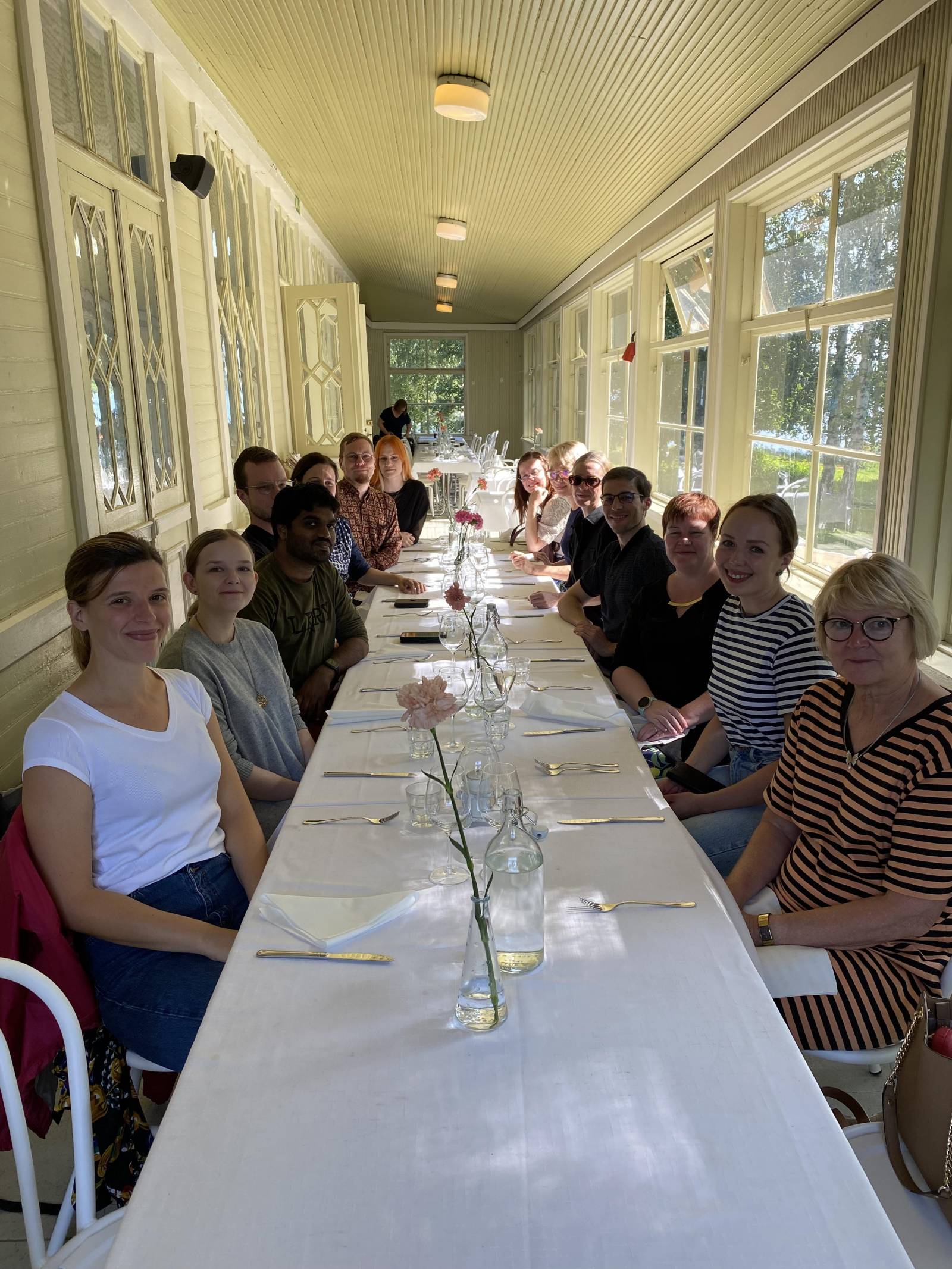The SOL-TECH consortium gathered to launch a new autumn season of the project in September. As things have progressed expectedly in the work packages, we were able to make plans for the next steps towards the co-design phase.
WP1 has been working on identifying, creating, and developing suitable lead-free solar cell materials for the project. A few promising compositions based on antimony and bismuth have been found as excellent candidates for the project. The candidate materials have suitable absorption for indoor photovoltaic applications. Further details of the materials can be found in our publications listed on the website.
There has been considerable development of the characterization and fabrication environment of perovskite solar cells at Tampere University. We have improved the characterization set up of indoor photovoltaics to match the state of the art. We are also expanding our fabrication environment this autumn with a second glovebox which will enable more solar cells research in inert atmosphere.
During the summer, WP 2 representatives visited the International Family Nursing Conference in Dublin, Ireland, to present the preliminary results of the data collected with the Resident Assessment Tool (RAI). More detailed analyzes of the association between falling and living conditions, social relationships or activities of daily living are about to begin.
Priming the RAI study, the project already conducted a scoping review about fall-related interventions. The results from this review will be used in the proceeding work of cumulating understanding about the fall-related interventions, and the conditions which stand out as effective in decreasing fall risks of older people at home. Educated by the findings in the review, the project will proceed with its initial plans to co-design fall- risk prevention in a study design of multiple strategies including home assessment, education, and implementation of new technology.
In WP3, the everyday life of the home-dwelling older people and views related to the use and attitudes of technology have been collected through an interview study. 50 older people living in their own homes participated the interviews. At the same time, the architects made lighting measurements and drew up floor plans for the apartments. Combining these findings will be one example to emphasize the value of multidisciplinary work done in SOL-TECH.
All this different qualitative and quantitative data provide important information for the development of fall tech at next phase of the project. At the core of this co-design phase, is the prototype where the new sustainable solar cell technology can ultimately be combined with fall tech, serving the needs of older home-dwelling people. The goal is to gain understanding about new technology that would be fall-preventing, socially and ecologically sustainable and comfortable in everyday use at home.

